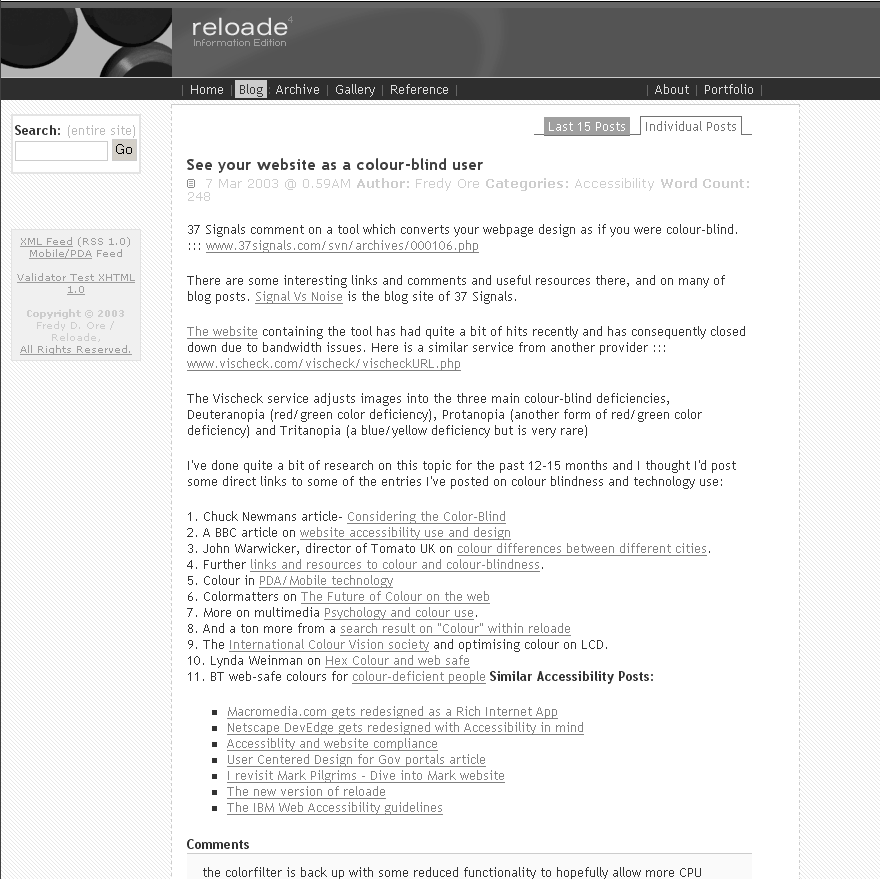37 Signals comment on a tool which converts your webpage design as if you were colour-blind.
www.37signals.com/svn/archives/000106.php
There are some interesting links and comments and useful resources there, and on many of the blog posts. Signal Vs Noise is the blog site of 37 Signals.
The website containing the tool has had quite a bit of hits recently and has consequently closed down due to bandwidth issues.
Update: (9 March 2003)
The website with the Colorblind Web Page Filter tool, is back online (thanks to Matt for letting me know).
I ran the filter on this page and here are the results (click on thumbnail to see larger image):
Here is a similar service from another provider
www.vischeck.com/vischeck/vischeckURL.php
Both the Vischeck service & Web Page Filter adjusts images into the three main colour-blind deficiencies, Deuteranopia (red/green color deficiency), Protanopia (another form of red/green color deficiency) and Tritanopia (a blue/yellow deficiency but is very rare).
I’ve done quite a bit of research on this topic for the past 12-15 months and I thought I’d post some direct links to some of the entries I’ve posted on colour blindness and technology use:
1. Chuck Newmans article- Considering the Color-Blind
2. A BBC article on website accessibility use and design
3. John Warwicker, director of Tomato UK on colour differences between different cities.
4. Further links and resources to colour and colour-blindness.
5. Colour in PDA/Mobile technology
6. Colormatters on The Future of Colour on the web
7. More on multimedia Psychology and colour use.
8. And a ton more from a search result on “Colour” within reloade
9. The International Colour Vision society and optimising colour on LCD.
10. Lynda Weinman on Hex Colour and web safe
11. BT web-safe colours for colour-deficient people



